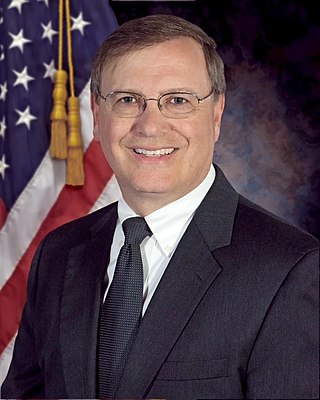
Homicide is an act in which a person causes the death of another person. A homicide requires only a volitional act, or an omission, that causes the death of another, and thus a homicide may result from accidental, reckless, or negligent acts even if there is no intent to cause harm. It is separate from suicide.
The Uniform Crime Reporting (UCR) program compiles official data on crime in the United States, published by the Federal Bureau of Investigation (FBI). UCR is "a nationwide, cooperative statistical effort of nearly 18,000 city, university and college, county, state, tribal, and federal law enforcement agencies voluntarily reporting data on crimes brought to their attention".

The Violent Crime Control and Law Enforcement Act of 1994, commonly referred to as the 1994 Crime Bill, or the Clinton Crime Bill, is an Act of Congress dealing with crime and law enforcement; it became law in 1994. It is the largest crime bill in the history of the United States and consisted of 356 pages that provided for 100,000 new police officers, $9.7 billion in funding for prisons which were designed with significant input from experienced police officers. Sponsored by U.S. Representative Jack Brooks of Texas, the bill was passed by Congress and signed into law by President Bill Clinton. Then-Senator Joe Biden of Delaware drafted the Senate version of the legislation in cooperation with the National Association of Police Organizations, also incorporating the Assault Weapons ban and the Violence Against Women Act (VAWA) with Senator Orrin Hatch.

Capital punishment is a legal punishment under the criminal justice system of the United States federal government. It is the most serious punishment that could be imposed under federal law. The serious crimes that warrant this punishment include treason, espionage, murder, large-scale drug trafficking, or attempted murder of a witness, juror, or court officer in certain cases.
The National Center for the Analysis of Violent Crime (NCAVC) is a specialist FBI department. The NCAVC's role is to coordinate investigative and operational support functions, criminological research, and training in order to provide assistance to federal, state, local, and foreign law enforcement agencies investigating unusual or repetitive violent crimes.
The Behavioral Analysis Unit (BAU) is a department of the Federal Bureau of Investigation's National Center for the Analysis of Violent Crime that uses behavioral analysts to assist in criminal investigations. Their mission is to provide behavioral-based investigative and/or operational support by applying case experience, research, and training to complex and time-sensitive crimes, typically involving acts or threats of violence.

Crime is one of the most urgent concerns facing Mexico, as Mexican drug trafficking rings play a major role in the flow of cocaine, methamphetamine, fentanyl, heroin, and marijuana transiting between Latin America and the United States. Drug trafficking has led to corruption, which has had a deleterious effect on Mexico's Federal Representative Republic. Drug trafficking and organized crime have been a major source of violent crime. Drug cartels and gangs have also branched out to conduct alternative illegal activities for profit, including sex trafficking in Mexico. Some of the most increasingly violent states in Mexico in 2020 included Guanajuato, Zacatecas, Michoacán, Jalisco, and Querétaro. Some of the world's most violent cities are reportedly within the state of Guanajuato with extortion from criminal groups now being commonplace. The state of Zacatecas is said to be valuable to multiple organized crime groups for drug trafficking, specifically methamphetamine to the United States. As of 2021, Michoacán is experiencing increased instances of extortion and kidnapping due to a growing presence and escalation in the armed conflicts between CJNG and Cárteles Unidos on regions bordering the neighboring state of Jalisco. CJNG is also currently battling the Los Chapitos faction of the Sinaloa Cartel in the North Mexican region of Sonora.

The Organized Crime Drug Enforcement Task Force (OCDETF) is a federal drug enforcement program in the United States, overseen by the Attorney General and the Department of Justice. The principal mission of the OCDETF program is to identify, disrupt, and dismantle the major drug trafficking operations and tackle related crimes, such as money laundering, tax and weapon violations, and violent crime, and prosecute those primarily responsible for the nation's drug supply.

Crime has been recorded in the United States since its founding and has fluctuated significantly over time. Most available data underestimate crime before the 1930s, giving the false impression that crime was low in the early 1900s and had a sharp rise after. Instead, violent crime during the colonial period was likely three times higher than the highest modern rates in the data we have, and crime had been on the decline since colonial times. Within the better data for crime reporting and recording available starting in the 1930s, crime reached its broad, bulging modern peak between the 1970s and early 1990s. After 1992, crime rates have generally trended downwards each year, with the exceptions of a slight increase in property crimes in 2001 and increases in violent crimes in 2005–2006, 2014–2016 and 2020–2021. As of July 1, 2024 violent crime was down and homicides were on pace to drop to 2015 levels by the end of the year.
John Henry Browne is an American criminal defense attorney practicing in Seattle, Washington. Browne is known for his zeal in defending his clients, his flair for garnering media attention, and for being known as the “plead guilty to avoid the death penalty” lawyer. He has represented defendants in a number of high-profile cases, including serial killer Ted Bundy, Colton Harris-Moore, Benjamin Ng and Martin Pang. He has tried over 250 criminal cases to verdict. Browne and his actions have been the subject of some controversy, and he has sometimes been criticized for his peculiar and combative style both in and out of the courtroom. He is particularly known for obtaining sympathetic treatment for his clients by shifting the focus away from the serious crimes that were committed by arguing for consideration of the background of the defendant and the circumstances in which the events took place.
In China crime occurs in various forms. The Chinese government does not release exact unified statistics on crime rates and the rate of criminal offending due to such information being considered politically and socially sensitive. Scarce official statistics released are the subject of much academic debate due to allegations of statistical fabrication, under-reporting and corruption. The illegal drug trade in China is a significant driver of violent crime, including murder.
Homicide Investigation Tracking System (HITS) is a violent crime database program of the Washington State Office of the Attorney General. The system tracks homicides and rapes in and/or relating to the states of Washington and Oregon and also receives data from at least three other states and Canada. The database provides information on over 14,000 murders and over 10,000 sexual assaults to local law enforcement agencies as well as advice and assistance in ongoing investigations. Notable cases that have been assisted by HITS include Gary Ridgway, John Allen Muhammad and Lee Boyd Malvo, and serial killer Robert Lee Yates.
Crime in Honduras has become a growing matter of concern for the Honduran population in recent years. Honduras has experienced alarmingly high levels of violence and criminal activity, with homicide rates reaching a peak in 2012, averaging 20 homicides per day. Corruption, extortion, coercion, and drug smuggling also run rampant throughout Honduran society, preventing the nation from building trustworthy authorities like police, and severely limiting economic, social, or political progress. The situation has prompted international organizations and governments to offer assistance in combating crime in Honduras.
Crime in Alaska has attracted significant attention, both within the state and nationally, due to its unique challenges and higher crime rates compared to the rest of the United States. A sparsely populated state with vast wilderness areas, Alaska poses particular difficulties for law enforcement and social service agencies.
In 2012, there were 451,142 crimes reported in the U.S. state of New York, including 686 murders. In 2014, 409,386 crimes were reported in the state, including 616 murders. This number further decreased in 2019, in which 335,736 crimes were reported, with 558 cases of murder. Throughout 2010-2019, violent crime dropped by 8.0%, and property crime dropped by -29.0%.
Since 1960, the U.S. state of Ohio has seen a wide variation in the frequency of violent crimes reported. In 2014, there were 33,030 violent crimes reported - the lowest rate the state has seen since 1973. In 2012 there were 405,262 crimes reported in Ohio, including 478 murders. In 2014 there were 357,558 crimes reported, including 464 murders.

Criminal justice reform seeks to address structural issues in criminal justice systems such as racial profiling, police brutality, overcriminalization, mass incarceration, and recidivism. Reforms can take place at any point where the criminal justice system intervenes in citizens’ lives, including lawmaking, policing, sentencing and incarceration. Criminal justice reform can also address the collateral consequences of conviction, including disenfranchisement or lack of access to housing or employment, that may restrict the rights of individuals with criminal records.

Chuck Rosenberg is an American attorney who served as Acting Administrator of the Drug Enforcement Administration from 2015 to 2017. He formerly served as the U.S. Attorney for the Eastern District of Virginia (EDVA) and for the Southern District of Texas; as a senior FBI official on the staff of two FBI Directors; as Counselor to the Attorney General; as the Chief of Staff to the Deputy Attorney General; and as an Assistant U.S. Attorney in the Eastern District of Virginia in Norfolk and Alexandria.
Crime in Puerto Rico describes acts of violent and non-violent crime that take place within the Commonwealth of Puerto Rico.

Decarceration in the United States involves government policies and community campaigns aimed at reducing the number of people held in custody or custodial supervision. Decarceration, the opposite of incarceration, also entails reducing the rate of imprisonment at the federal, state and municipal level. As of 2019, the US was home to 5% of the global population but 25% of its prisoners. Until the COVID-19 pandemic, the U.S. possessed the world's highest incarceration rate: 655 inmates for every 100,000 people, enough inmates to equal the populations of Philadelphia or Houston. The COVID-19 pandemic has reinvigorated the discussion surrounding decarceration as the spread of the virus poses a threat to the health of those incarcerated in prisons and detention centers where the ability to properly socially distance is limited. As a result of the push for decarceration in the wake of the pandemic, as of 2022, the incarceration rate in the United States declined to 505 per 100,000, resulting in the United States no longer having the highest incarceration rate in the world, but still remaining in the top five.












